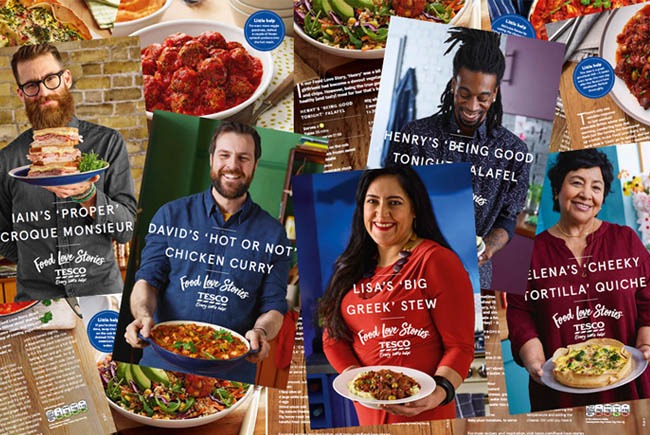
Lessons in Brand Authenticity from a Romantic Comedy
In the classic 1990s rom-com Groundhog Day, Bill Murray plays a weatherman condemned to re-live a single day forever—until he finally gets it right. In this case, ‘getting it right’ means successfully wooing his ultra-sensible producer, played by Andie MacDowell. With infinite attempts at his disposal, Murray can learn more about MacDowell—his target audience—every day, contorting himself cynically into an engineered version of what should theoretically be her perfect man.
Improbably, Groundhog Day illuminates one of the central difficulties of successful brand positioning. The very way we talk about brand “strategy” implies that it is something that we do. That we can choose the identity we want to inhabit and simply engineer that identity through clever marketing execution. But, in their seminal 1980 book on branding, Positioning: The Battle for Your Mind, Al Ries and Jack Trout are careful to emphasize that your brand positioning is not the image you want to portray; it is, instead, the essence of what the market perceives you to be.
For Ries and Trout, “positioning” was not about choosing some optimized white space in your category and adopting that as your new brand strategy, as if you were changing your clothes. Instead, successful positioning is about finding the one thing you want to be famous for that is already true for you—and then making that the north star of your entire brand experience. Put another way, successful positioning requires authenticity.
Which brings us back to Punxatawny, PA where Bill Murray re-lives Groundhog Day. It’s only when he stops trying to engineer a result—when he starts to act on his real values—that he lifts his curse. Murray gets the girl, and the rest of his life, by finally allowing himself to be authentic.
And authenticity doesn’t come from anything Murray says. Andie MacDowell sees through his fast-talking self-promotion for exactly what it is: insincere advertising. Instead, Murray wins her heart when she sees the role he plays in the lives of the people of Punxatawny. Whether it’s a boy stuck in a tree, a lovelorn waitress, or a lonely old man: Murray’s relationships with them —his role in their stories— ultimately says more about him than anything he can say about himself.
The lesson for our brands is obvious. The execution, less so. It’s an interesting paradox, how to ‘engineer authenticity.’ Part of the solution is to stop talking endlessly about ourselves. We can often make more headway by telling our customers’ stories than our own.
How Tesco Found Brand Love & Brand Authenticity
Tesco is one of the worlds’ largest retailers, with a market capitalization of roughly $30 billion. It is the leading grocer in the UK, with a major presence in many other European and Asian markets, totaling 6,500 stores worldwide. And, for many years, it was getting thumped by deep-discount competitors like Aldi and Lidl. In 2014, Tesco reported a loss of £6.4B.
If the goal of a brand is to create irrational preference, Tesco’s brand strategy earned a failing grade. Look at this photo of a Tesco store—and see how long it takes to figure out the essence of Tesco’s historic branding.

source: The Guardian
This price-based positioning was consistent throughout their marketing touchpoints—as much in TV and radio ads as in their point-of-purchase displays. “Low-price” can be an effective brand strategy. Indeed, price positioning has been part of the Tesco brand since 1919, when founder Jack Cohen sold surplus groceries from a stall in London’s East End.
So while Tesco is authentically rooted in price value, it’s a rational appeal that can be undercut in an instant. As Tesco watched the erosion of its price-based positioning, it realized it had no deeper source of engagement with its audience.
There was no emotional connection between the brand and its shoppers—and, in turn, none of the irrational preference that sustains business when the price is no longer an effective lever. Tesco emerged from its downward spiral with a substantially re-engineered approach to the brand, pivoting from price to an enduring, emotional territory: a shared love of food. Cleverly, the company realized that the best way to convey the new brand territory was not by talking about Tesco directly but by sharing the stories of its customers and its producers.
From Rational Appeal to Emotional Branding
As Michelle McEttrick, Tesco’s Group Brand Director, explained, “We’re launching ‘Food Love Stories brought to you by Tesco,’ a campaign that puts food at the very heart of our business and tells the stories behind the meals we all make for those closest to us.” The campaign features both the treasured meals that consumers make as an expression of love for their families, as well as the passion and care that Tesco producers pour into the ingredients themselves.
Rather than focus on Tesco’s love of food, it featured stories from those in its orbit — including customers, partners, and employees. These were real people cooking heirloom recipes, real farmers laboring over local, artisanal products. Their passion told a persuasive story about how we all love food, and placed Tesco intrinsically (but not ostentatiously) at the center of this food-loving ecosystem.
The result? Tesco pivoted from a purely functional appeal: Tesco helps shoppers by delivering value and convenience.
To an emotional connection with its audience: Tesco brings people together through a shared love of food.
Nor did the company need to abandon all of its legacy branding in order to make the transition. It retained its old tagline, “Every little helps,” but transformed the context from cost savings to helping improve lives and relationships through the shared love of food.
As it should, the new brand positioning went beyond just marketing campaigns, informing product development as well. Tesco phased out its “Everyday Value” private label and replaced it with private labels embodying a more premium, artisanal feel.

source: mediatel
Emotional Branding Creates Brand Love
Part of what made Tesco’s strategy effective was its acknowledgment that the distance between its longstanding brand position and its desired brand position was considerable. There’s a long way to go between “cheap” and “loving”—but “loving” was a characteristic people were willing to attribute to farmers and bakers and family cooks. The brilliance of Tesco’s strategy was its ability to co-opt those positive associations for its own brand.
Love works. In its 2018 annual report, a year after launching the new food love strategy, Tesco reported a £1.6B increase in sales, 260,000 additional shoppers, and a 20% improvement in its quality scores. Sharing personal stories of real customers, as well as Tesco’s partners and employees, effectively reframed the brand-consumer relationship.
Just as McDowell fell in love with Murray when she witnessed the role he played in the lives of others, Tesco consumers saw the meaningful role of the brand in the lives of real people and could recognize that role in themselves.
Escalent helps brands across industries inspire mad love and build brand authenticity. What’s your brand’s love story?









